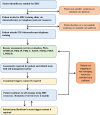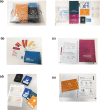Real-World Evaluation of the Feasibility, Acceptability and Safety of a Remote, Self-Management Parkinson's Disease Care Pathway: A Healthcare Improvement Initiative
- PMID: 38250784
- PMCID: PMC10836560
- DOI: 10.3233/JPD-230205
Real-World Evaluation of the Feasibility, Acceptability and Safety of a Remote, Self-Management Parkinson's Disease Care Pathway: A Healthcare Improvement Initiative
Abstract
Background: There is significant unmet need for effective and efficiently delivered care for people with Parkinson's disease (PwP). We undertook a service improvement initiative to co-develop and implement a new care pathway, Home Based Care (HBC), based on supported self-management, remote monitoring and the ability to trigger a healthcare contact when needed.
Objective: To evaluate feasibility, acceptability and safety of Home Based Care.
Methods: We evaluated data from the first 100 patients on HBC for 6 months. Patient monitoring, performed at baseline and 6-monthly, comprised motor (MDS-UPDRS II and accelerometer), non-motor (NMSQ, PDSS-2, HADS) and quality of life (PDQ) measures. Care quality was audited against Parkinson's UK national audit standards. Process measures captured feasibility. Acceptability was assessed using a mixed-methods approach comprising questionnaires and semi-structured interviews.
Results: Between October 2019 and January 2021, 108 PwP were enrolled onto HBC, with data from 100 being available at 6 months. Over 90% of all questionnaires were returned, 97% were complete or had < 3 missing items. Reporting and communications occurred within agreed timeframes. Compared with baseline, after 6m on HBC, PD symptoms were stable; more PwP felt listened to (90% vs. 79%) and able to seek help (79% vs. 68%). HBC met 93% of national audit criteria. Key themes from the interviews included autonomy and empowerment.
Conclusions: We have demonstrated acceptability, feasibility and safety of our novel remotely delivered Parkinson's care pathway. Ensuring scalability will widen its reach and realize its benefits for underserved communities, enabling formal comparisons with standard care and cost-effectiveness evaluation.
Keywords: Parkinson’s disease; Self-management; digital health technology; remote management; sensor.
Conflict of interest statement
CC has received honoraria for consultancy services and/or service grants from AbbVie, Bial, Britannia, GKC, Kyowa Kirin, Lundbeck and Medscape. She has received research grants from Parkinson’s UK, Cure Parkinson’s, National Institute for Health and Care Research, and the Edmond J Safra Foundation. CC is an Editorial Board Member of this journal but was not involved in the peer-review process nor had access to any information regarding its peer-review. MHVV is currently employed by AstraZeneca. At the time of undertaking the qualitative research TN was a Non-Executive Director with Cornwall Partnership NHS Foundation Trust. No other authors have conflicts to declare.
Figures



References
-
- National Institute for Health and Care Excellence, Parkinson’s disease in adults. NICE guideline [NG71], https://www.nice.org.uk/guidance/ng71, Accessed 10 March 2023..
-
- Parkinson’s UK, Parkinson’s UK Audit –Transforming Care, https://www.parkinsons.org.uk/media/34696.
-
- Parkinson’s UK (2022), Written evidence submitted by Parkinson’s UK (RTR0067). https://committees.parliament.uk/writtenevidence/42721/pdf/.
-
- Weir S, Samnaliev M, Kuo TC, Tierney TS, Walleser Autiero S, Taylor RS, Schrag A (2018) Short- and long-term cost and utilization of health care resources in Parkinson’s disease in the UK, Mov Disord 33, 974–981. - PubMed
-
- NHS England, The NHS Long Term Plan., https://www.longtermplan.nhs.uk/, .
Publication types
MeSH terms
LinkOut - more resources
Full Text Sources
Medical
Research Materials
Miscellaneous

